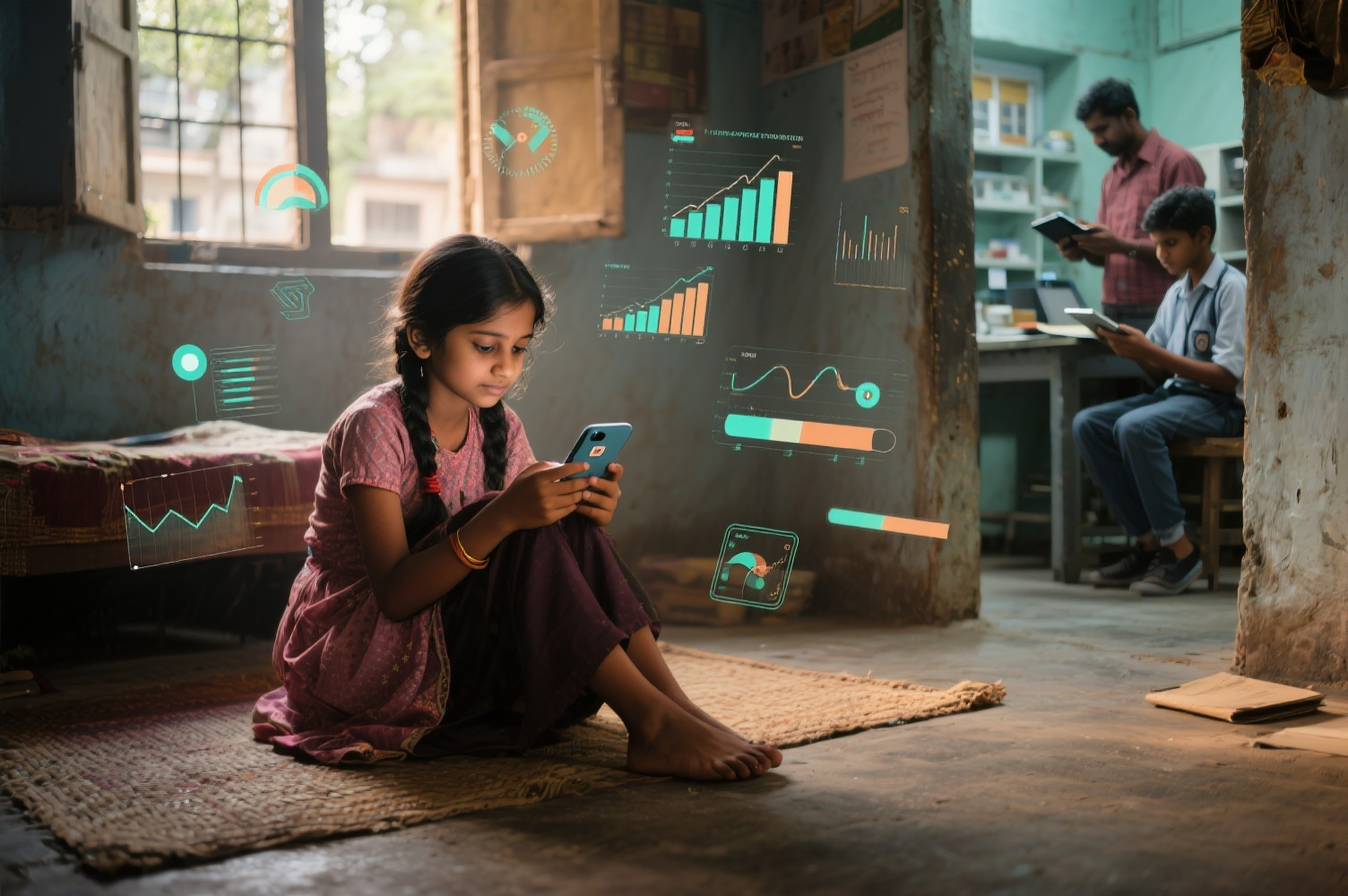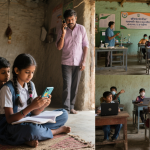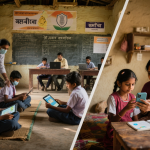- December 7, 2023
- by Educational Initiatives
- Blog
- 0 Comments
This is the second of a three-part series documenting Ei’s attempts to help students use its Personalised Adaptive Learning software, Mindspark, during the COVID-19 pandemic. The first part focused on the process of reaching students at home, and the third will highlight key learnings from this process. This article showcases key insights from Mindspark usage data, and the third will highlight learnings from this process of implementation. For a complete understanding of Ei’s implementation of Mindspark during COVID-19, read this report.
____________________________________________________________________________
Covid-19 induced lockdowns have kept students away from schools for over a year. To ensure students continued learning in this time, Ei made Mindspark, its Personalised Adaptive Learning software, remotely accessible. Despite the difficulties thrown in by pandemic-induced lockdowns, travel restrictions, and social distancing requirements, Ei reached over 1,26,000 students in this period. An analysis of Mindspark data from this period sheds valuable insight into access to and usage of EdTech in this period, helping us develop a detailed understanding of learning during COVID-19.
Older students have greater access to EdTech at home than younger ones
Studies have shown that access to digital devices is skewed across age groups. A 2017-18 NSS report, for example, found that only 7% of children from age 5 to 14 were able to use the internet. During the pandemic, this naturally placed them at a disadvantage as they would have been less able to learn at home.
Mindspark usage data from this period also supports this belief. Only 35% of Mindspark users were from grades 1 to 5; the majority (65%) belonged to grades 6 to 10. Older students also tended to use Mindspark for longer durations. Among students in Rajasthan, for example, those from grades 6-10 used the software for 315 minutes on average in the year, while students from grades 1-5 used it for 267 minutes.

Students in urban areas have greater access to digital devices than students in rural areas
Since Mindspark access was dependent on access to digital devices and the internet, usage across geographies varied based on digital penetration in those regions. Mindspark data shows that students in urban had access to EdTech for greater periods of time. Students in five major cities – Ahmedabad, Bhopal, Delhi, Lucknow, and Mumbai – used Mindspark for an average of 518 minutes. Those from smaller cities, towns and villages, meanwhile, used it for an average of 317 minutes in the previous academic year.
Similar patterns were seen in community labs that Ei established to provide Mindspark access to students without devices at home. Here, Ei’s field team members would take laptops or tablets to community centres and supervise student usage in these locations. Establishing these labs was easier in urban areas relative to rural areas. Since distances to travel were smaller and student density in individual locations greater, community labs could be established more frequently in cities than in villages.


Students using Mindspark in a Community Lab in the city of Lucknow
Female students used EdTech for longer than males and performed better
Studies have suggested that women and girls, especially in rural areas, have disproportionately low access to technology relative to men and boys. For example, the 2018 NSSO study shows that while 13% of rural people aged five and above had access to the internet, only 8.5% of females did. Similarly, a 2020 survey by the Delhi-based Digital Empowerment Forum (DEF) showed in the state of Maharashtra only 6.9% of internet users below 14 are girls, while 93.1% are boys.

However, an analysis of Mindspark usage data from this period has shown differently. Across India, more female students used Mindspark during the last year than males. In contrast to the findings of DEF’s survey, 51% of Mindspark users in Maharashtra were girls, while 49% were boys.
Not only did more girls use Mindspark than boys, but they also used it for longer periods of time. On average, boys learned on the platform for 370 minutes in this period, while girls used it for 413 minutes. Additionally, they featured more prominently amongst top performers as well. In different programmes, top-performing students were rewarded with tablet computers or stationery kits. In Lucknow, for example, 5 of 9 award winning-students were girls, while in Himachal Pradesh, 23 of the 40 were.

More users, but less usage
Though Mindspark’s user base grew significantly in this period, with more than double the number of users accessing the platform, ensuring high-quality usage was challenging. This was reflected in the number of ‘level jumps’ students achieved in this period. A ‘level jump’ is an increase in the learning level that a student achieves while using Mindspark. The ‘levels’ correspond to those set by curricular content, i.e., a student who learns at a class 3 level (regardless of what class they are actually in) can answer questions from the class 3 curriculum at the most. Therefore, if this student was able to answer questions at a class 4 level after using Mindspark, they would have achieved a ‘level jump’.
During this period, there were only 0.93 level jumps achieved per 100 students, versus 18.07 in the 2019-20 academic year.
Figure above: A girl using Mindspark at home in Himachal Pradesh

Conclusion
Mindspark usage data from the previous academic year has shown that though EdTech can be deployed at scale in India, even among students from socio-economically disadvantaged backgrounds, there is work to be done to ensure equitable and effective usage. Skewed access along urban-rural lines and across age groups needs to be solved for. Younger students especially must be provided with the tools necessary to enable foundational literacy and numeracy early on, without which all subsequent learning is hampered.
Greater outreach is also needed among families and communities to ensure high-quality and focused usage of EdTech at home. Since EdTech is a radical departure from learning-as-usual, these groups, who act as gatekeepers for technology to their children, must be made to understand why it is beneficial. While giving access to devices is a crucial first step, a lack of supervision or participation in this process means that learning may not occur to the greatest extent possible.
Positively, though, this data also showed that the digital divide is not destiny. That more female students could use Mindspark than males, for longer periods of time, and be better represented among top-performers shows that EdTech can indeed bridge divides instead of accentuating them.



